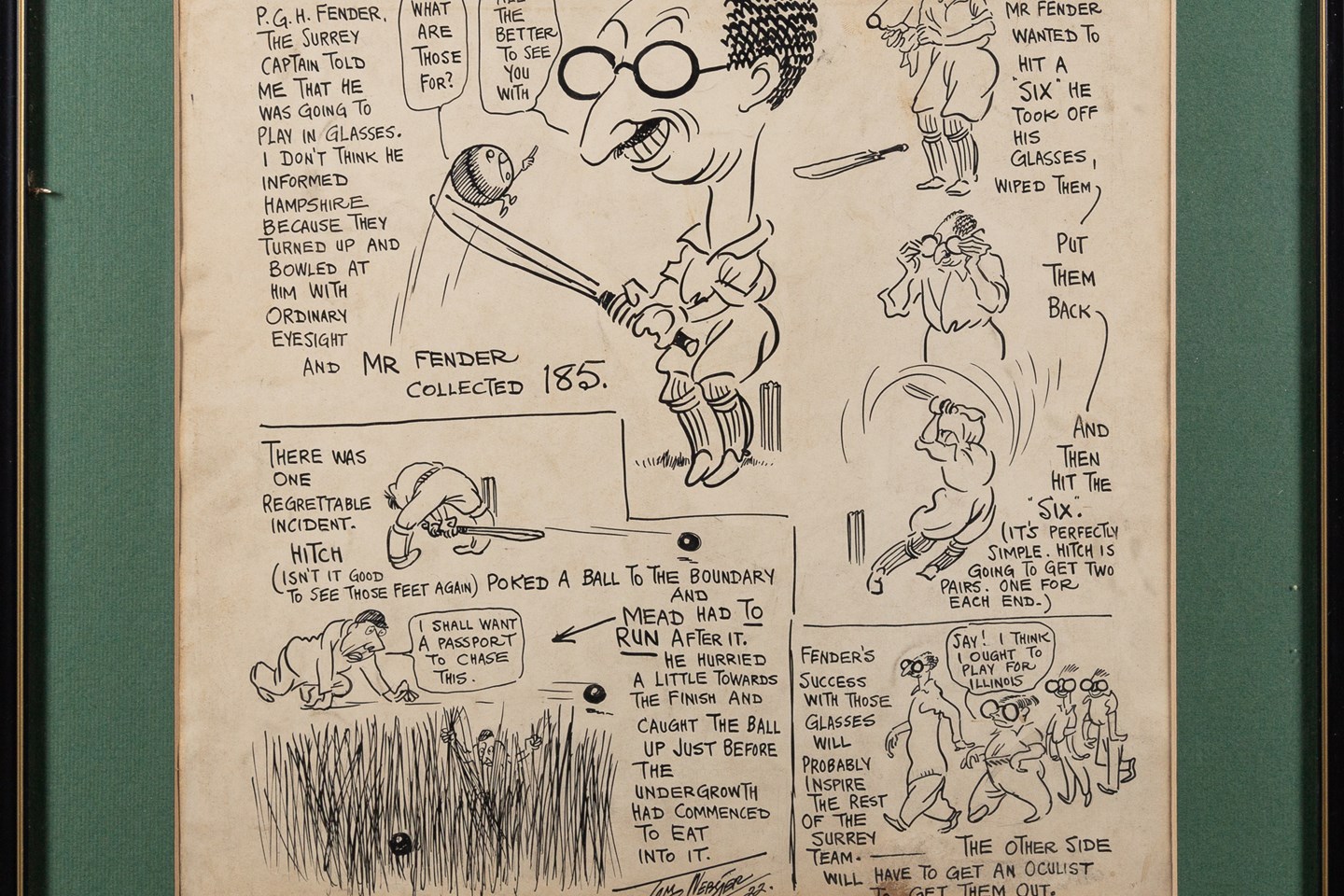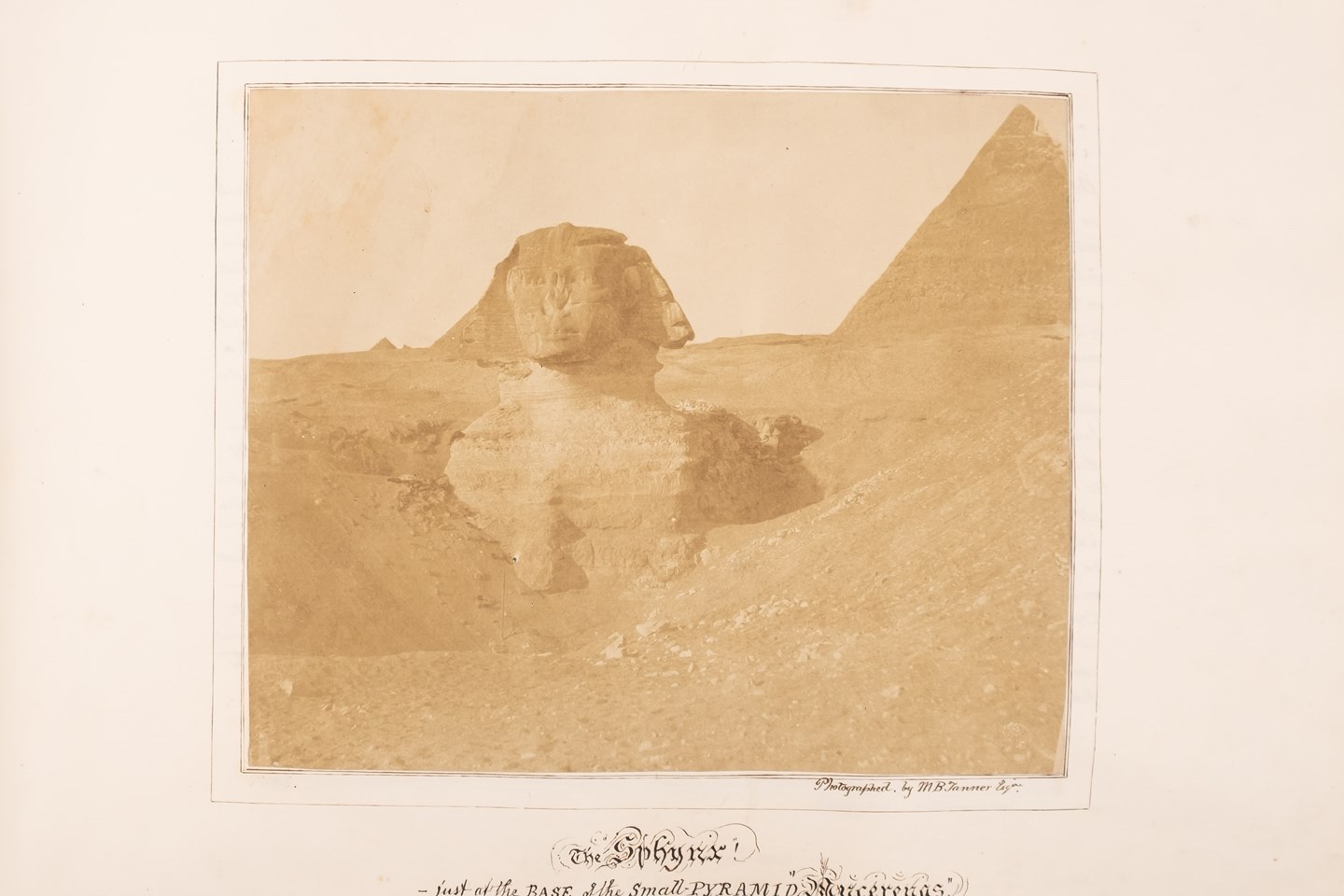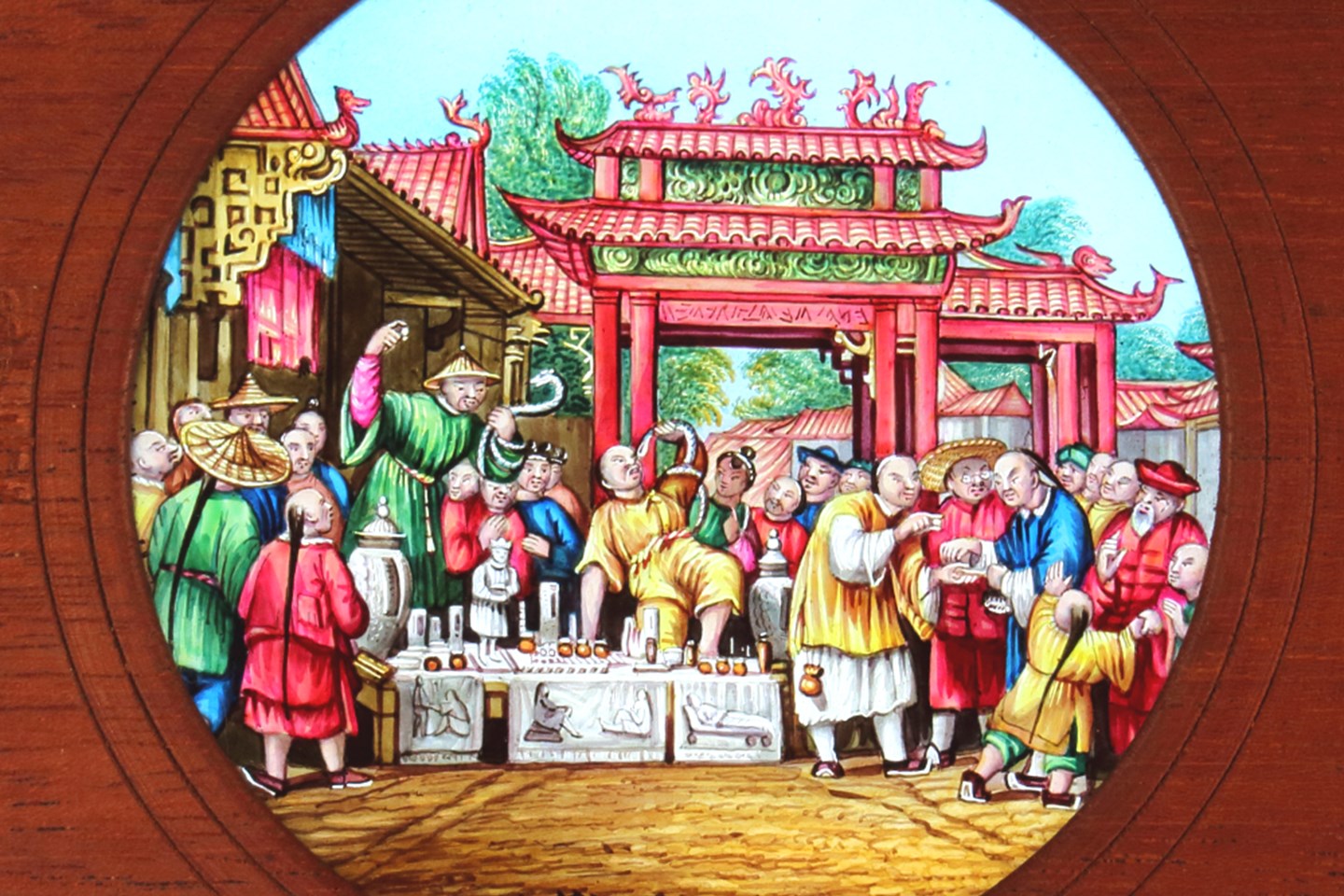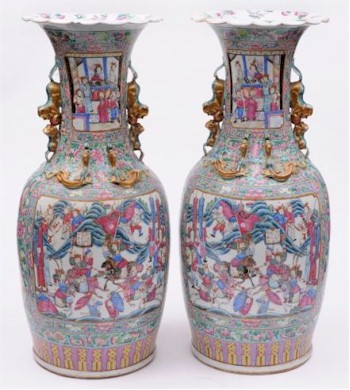
An impressively large pair of Canton vases nearly 80cm high.
For many years, Canton porcelain had rather been looked down upon both by Western and Oriental collectors alike. Distinct in its busy and profusely decorated schemes rendered in a largely famille rose palette within rather florid green and richly gilded grounds. Extremely popular throughout much of the 19th century, it probably rather fitted into the Victorian aesthetic, but fell from grace as the century came to an end.
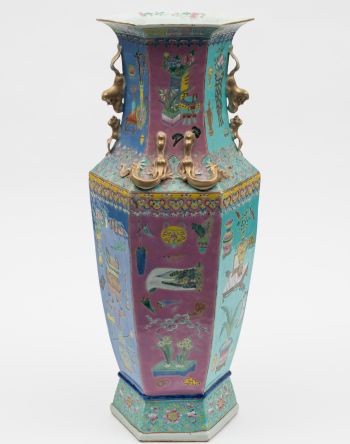
A Canton decorated vase of typical form with chilong and kylin, but in a very unusual palette.
Like much Chinese porcelain, it was produced, fired and glazed in Jingdezhen, but unlike the bulk, it was then sent down to Canton (a town up river from Hong Kong and Macao known as Guangzhou) for subsequent decoration.
Produced entirely for export, which probably explains why it wasn't initially popular with Chinese buyers, much of the decoration is largely a variation on formulaic patterns generically referred to as Rose Medallion or Rose Mandarin. The former being the most common include multiple panels or medallions, with the inclusion of flowers, (more often peony), copious scrolling foliage, fruit, birds and butterflies – the latter being broadly similar but with the addition of figures within garden landscapes.
The prolific use of the mythical Chilong and Kylin as handles or shoulder decoration are a frequently occurring feature with the odd appearance of elephant or more rarely pelican or antelope masks.
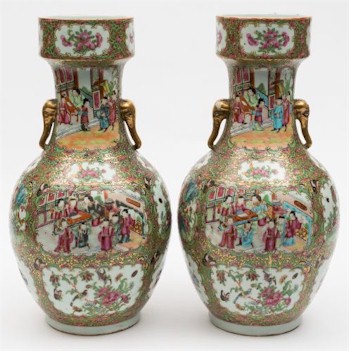
A pair of 'Chinese' shape Canton porcelain vases with elephant mask handles.
One can only assume that Cantonese was seen as 'off the shelf' Chinese porcelain for foreigners, as whilst some celadon ground wares with rather sparse decoration were produced, there is little deviation from the typical palette and schemes and certainly very little influence, if any, from the West, apart from a small volume of armorial wares.
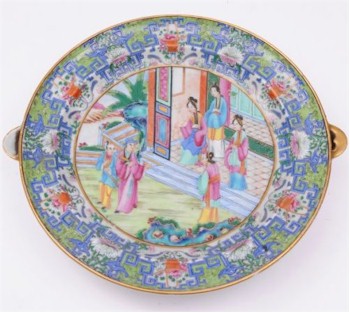
An exception to the rule a Canton warming plate made after a European prototype.
My guess is that the export market had largely declined from its heyday in the mid-18th century because flourishing European porcelain production made it decidedly uncommercial, so 'production line' decorating of blanks bought from Jingdezhen was the only way of finding a commercial niche in a declining competitive market.
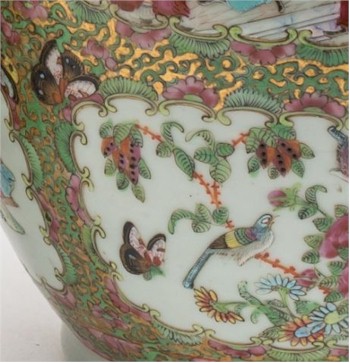
A detail of a Cantonese vase showing some of the typical florid elements.
Also, in retrospect I can see that these were often in 'Chinese' shapes or forms as they were originally intended for domestic consumption, which would provide some appeal almost in spite of the decoration. The only conundrum that remains is whilst European manufacturers were adept at making porcelain in the Chinese idiom they either couldn't or chose not to mimic Cantonese wares.
- Bearnes Hampton & Littlewood
- Porcelain Auctions
- Canton Porcelain
Canton Porcelain - The Rose Medallion family 1840-1880 was written on Tuesday, 16th June 2015.







